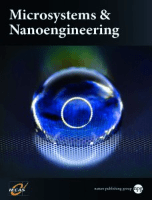
Microsystems & Nanoengineering
metrics 2024
Exploring Interdisciplinary Connections in Nanoengineering
Introduction
Microsystems & Nanoengineering, published by SpringerNature, stands at the forefront of advancing knowledge in the fields of atomic and molecular physics, condensed matter physics, electrical and electronic engineering, and materials science. With an impressive impact factor and categorized in Q1 across multiple prestigious fields in 2023, this journal not only provides a platform for high-quality research but also reflects the vitality of innovations within these disciplines. Since its transition to Open Access in 2015, it has significantly broadened accessibility for researchers, professionals, and students globally, facilitating the dissemination of groundbreaking findings. Addressed in the United Kingdom, with a focus on interdisciplinary collaboration, Microsystems & Nanoengineering aims to foster connections between theoretical advancements and practical applications, serving as a crucial resource for those engaged in cutting-edge nanoscale technologies and microsystems development. Immerse yourself in the latest studies and engage with the vibrant community that shapes the future of science and engineering.
Metrics 2024
 1.63
1.63 7.30
7.30 7.70
7.70 59
59Metrics History
Rank 2024
Scopus
IF (Web Of Science)
JCI (Web Of Science)
Quartile History
Similar Journals

MICROSYSTEM TECHNOLOGIES-MICRO-AND NANOSYSTEMS-INFORMATION STORAGE AND PROCESSING SYSTEMS
Illuminating the future of electronics through rigorous research.MICROSYSTEM TECHNOLOGIES-MICRO-AND NANOSYSTEMS-INFORMATION STORAGE AND PROCESSING SYSTEMS is an esteemed scholarly journal published by SPRINGER HEIDELBERG, bringing together cutting-edge research in the fields of microsystems and nanosystems, with a specific focus on information storage and processing technologies. With its origins tracing back to 1994, this journal has established a solid reputation within the academic community and currently ranks in Q3 across key disciplines, including Condensed Matter Physics and Electrical and Electronic Engineering, as assessed by the 2023 category quartiles. The journal is notable for its contribution to advancing knowledge in Nanoscience and Materials Science, particularly in the domains of electronic, optical, and magnetic materials. As a pivotal resource for researchers, professionals, and students alike, it offers insights into innovative methodologies, applications, and breakthroughs in microsystems technologies that are shaping the future of electronics and computing. While currently not an open-access journal, it maintains a commitment to disseminating significant findings in the rapidly evolving landscape of information processing systems, fostering collaboration and knowledge exchange within the scientific community.
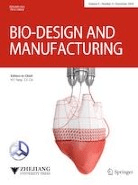
Bio-Design and Manufacturing
Transforming Biology into Breakthrough ManufacturingBio-Design and Manufacturing, published by SPRINGER HEIDELBERG, is a pioneering journal that stands at the forefront of innovation in the fields of Biomedical Engineering, Biotechnology, Industrial and Manufacturing Engineering, and Materials Science. With its ISSN 2096-5524 and E-ISSN 2522-8552, this journal has established itself as a leading platform for disseminating cutting-edge research and advancements that merge biological principles with manufacturing processes, emphasizing sustainable and efficient practices. It has garnered recognition in the 2023 category quartiles, boasting a Q1 rank in all its relevant fields, which underscores its significance and impact—evident from its prime Scopus rankings that place it within the top percentiles of numerous engineering and materials science disciplines. Researchers, professionals, and students alike benefit from the wealth of knowledge presented in this journal, making it an essential resource for those seeking to enhance their understanding of bio-design applications and innovation in manufacturing processes.
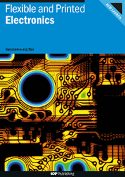
Flexible and Printed Electronics
Elevating the Standards of Electronic ResearchFlexible and Printed Electronics, published by IOP Publishing Ltd, is a leading journal dedicated to advancing the field of flexible and printed materials within the realm of electrical and electronic engineering. With an impressive Q2 ranking in both Electrical and Electronic Engineering and Electronic, Optical, and Magnetic Materials, this journal is recognized for its significant contributions to the understanding and application of innovative electronic devices and systems. Covering a wide array of topics from materials science to engineering applications, it serves as a vital resource for researchers, professionals, and students alike. The journal's rigorous peer-review process and commitment to high-quality publications ensure that readers are exposed to cutting-edge research and developments. Submissions are welcomed from global contributors, providing a platform for the dissemination of groundbreaking ideas and technologies. With its impressive impact in the academic community, Flexible and Printed Electronics is poised to influence the future of electronics and materials technology.

Nanotechnology and Precision Engineering
Empowering research in nanotechnology and precision engineering.Nanotechnology and Precision Engineering is a leading open access journal published by AIP Publishing, dedicated to advancing the fields of nanotechnology and precision engineering. Established in 2006, the journal has become a vital resource for researchers, professionals, and students, reflecting the latest advancements in Electrical and Electronic Engineering, Industrial and Manufacturing Engineering, Instrumentation, Mechanical Engineering, and Nanoscience. With an impressive variety of quartile rankings in Scopus—notably Q1 in several key engineering domains—the journal provides a robust platform for disseminating groundbreaking research. Noteworthy aspects include its open access format introduced in 2018, ensuring that high-quality research is freely accessible to a global audience. By maintaining a commitment to excellence and collaboration, Nanotechnology and Precision Engineering plays a crucial role in shaping the future of technology and innovation.
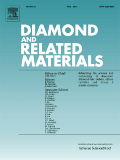
DIAMOND AND RELATED MATERIALS
Illuminating the future of advanced materials.DIAMOND AND RELATED MATERIALS, published by Elsevier Science SA, serves as a premier international platform for the dissemination of high-quality research in the fields of materials science, electrical engineering, and chemistry, with a specialized focus on diamond and its related materials. With an ISSN of 0925-9635 and an E-ISSN of 1879-0062, this journal has established itself within the top quartiles, reflecting its influential contribution to the scientific community, particularly in the categories of Chemistry (miscellaneous) and Electrical Engineering, among others. The journal's wide scope encompasses both theoretical and applied aspects of diamond research, making it an essential resource for professionals and academics alike. The current rankings position it favorably within its respective disciplines, with a notable 79th percentile in General Physics and Astronomy and strong standings in related categories. Although it does not offer open access, researchers can stay informed of cutting-edge advancements and methodologies through its comprehensive articles and reviews, enriching the wider discourse in advanced materials research.

Journal of Optical Microsystems
Pioneering Insights in Atomic, Molecular, and Material SciencesJournal of Optical Microsystems, published by SPIE-SOC PHOTO-OPTICAL INSTRUMENTATION ENGINEERS, is a premier open-access journal dedicated to advancing the field of optical microsystems. With a focus on the intersections of Atomic and Molecular Physics, Electrical Engineering, and Materials Science, this journal has quickly emerged as a key resource since its inception in 2021, currently maintaining a Q2 ranking in multiple relevant categories. Although it is relatively new, its impact within the academic community is reflected in its percentile rankings, positioning it among the top-tier journals. The Journal provides a platform for researchers, professionals, and students to publish and access cutting-edge studies that explore innovative applications of optical technologies. With its commitment to disseminating high-quality research and the growing importance of optics in technology, the Journal of Optical Microsystems plays a critical role in bridging the gap between theoretical advancements and practical applications in the field. Located in the United States, it is poised to connect an international audience eager to contribute to and benefit from developments in optical and electronic materials.
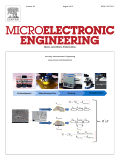
MICROELECTRONIC ENGINEERING
Unveiling New Horizons in Atomic and Molecular PhysicsMICROELECTRONIC ENGINEERING is an esteemed journal published by Elsevier, focusing on the rapidly evolving fields of microelectronics and nanotechnology. It encompasses a wide array of topics, including atomic and molecular physics, condensed matter physics, and the engineering aspects of electronic, optical, and magnetic materials. With its impressive impact factor and recognition as a Q2 journal in several categories, it provides an invaluable platform for researchers and professionals to disseminate their groundbreaking findings. The journal has been instrumental in advancing our understanding and application of microelectronic technologies since its inception in 1983. Currently ranked highly within various specialized categories in Scopus, MICROELECTRONIC ENGINEERING offers targeted access to cutting-edge research, fostering innovation and collaboration in the world of electronic engineering and materials science. As we look towards the future, with convergence continuing to shape research until 2024, the journal remains a critical resource for those dedicated to pushing the boundaries of knowledge in these dynamic fields.

Discover Nano
Igniting Discussions in Nanoscience and BeyondDiscover Nano is a pioneering journal published by SPRINGER, dedicated to the rapidly evolving field of nanoscience and nanotechnology. Established in 2023, this innovative platform provides an open-access forum for researchers, professionals, and students to share and disseminate cutting-edge findings in materials science and condensed matter physics. With its commitment to accessibility, Discover Nano encourages a broad spectrum of contributions, aiming to foster collaboration and stimulate discussion in this dynamic area of study. As a new entry into the academic community, the journal holds great potential for growth, aspiring to increase its visibility and impact in the materials science arena, where it currently ranks in the bottom quartile for both materials science and physics categories. Based in Germany and reaching a global audience, Discover Nano represents a significant opportunity for those looking to shape the future of nanotechnology through impactful research and interdisciplinary dialogue.
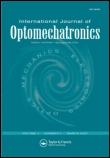
International Journal of Optomechatronics
Empowering researchers with open access to cutting-edge discoveries.The International Journal of Optomechatronics, published by Taylor & Francis Inc, is a leading peer-reviewed journal dedicated to the convergence of optics, mechanics, and electronics. With an ISSN of 1559-9612 and an E-ISSN of 1559-9620, this esteemed journal has been at the forefront of research in Electrical and Electronic Engineering, Instrumentation, and Mechanical Engineering since its inception in 2007. Its exceptional reputation is reflected in its Q1 rankings across multiple categories as of 2023, positioning it among the top-tier journals in the field. As an open access publication since 2017, it encourages wide dissemination of innovative research and technological advancements. With impactful contributions that span applications in robotics, control systems, and advanced manufacturing, the journal serves as a vital resource for researchers, professionals, and students aiming to remain at the cutting edge of optomechatronic science and engineering.
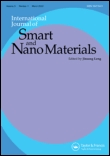
International Journal of Smart and Nano Materials
Unlocking Potential through Innovative Material ScienceThe International Journal of Smart and Nano Materials is a leading peer-reviewed publication in the fields of civil and structural engineering, mechanics of materials, and materials science, published by Taylor & Francis Ltd. With its notable Open Access format since 2010, this journal aims to disseminate innovative research and advancements in smart materials and nano technologies, which are crucial for the development of sustainable and efficient engineering solutions. The journal has established a strong reputation, being classified in the Q1 category for Civil and Structural Engineering and Mechanics of Materials, and ranked highly in Scopus with impressive percentiles, illustrating its impact within the academic community. Covering research from 2010 to 2024, it serves as an essential resource for researchers, professionals, and students seeking to stay at the forefront of material innovation and engineering prowess. Current access options facilitate the broad distribution of knowledge, reflecting the journal's commitment to advancing scientific inquiry and application in an increasingly nanotechnology-driven world.